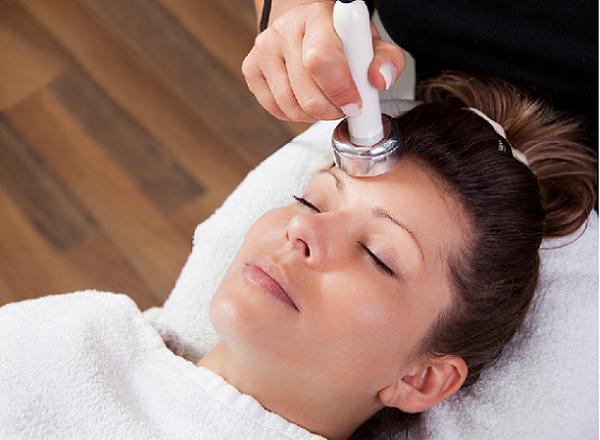
Acne occurs when an oily substance called sebum lubricates your hair follicles and dead skin cells and plugs the pores. Bacteria formed from perspiration can cause inflammation and infection which may result in further complications. With the right kind of treatment, acne can be kept under control. Modern day acne treatments give you several options, from prescription or over the counter creams, lotions and antibiotics which target the various causes of acne to new acne treatments like blue light therapy or diode laser therapy. They are all effective but the latter is mostly prescribed to people who do not respond well to the primary treatments.
1. Laser and light therapy
Laser and light therapies have the ability to reach the deep inner layers of skin without causing any tear or harm to the outer surface of the skin. Some of the laser treatments may have drying effects on the skin, they may damage the sebaceous glands, which in turn will cease to produce adept amount of oil. The other types of laser and light therapies target propionibacterium acne, the bacteria that occurs largely from sweat and moisture and causes inflammation. In addition to the treatment of acne these kind of therapies are also known to improve skin texture and fade out the scars, so people with both active acne and acne scars benefit most from it.
Some types of laser and light therapy are:
a. Blue light therapy
This therapy involves exposure to a low-intensity blue light of the skin. It is believed to destroy propionibacterium acne. This procedure is painless and is completed by a series of sittings or sessions. Propionibacterium acne grows and spreads rapidly, hence ongoing treatment is the way to achieve optimum results. Side effects may include temporary redness and dryness.
b. Pulsed light and heat energy therapy
Pulsed light and heat energy together can eliminate propionibacterium acne and reduce oil production in skin by shrinking sebaceous glands to decrease further acne occurrence. Side effects include redness in the treated areas temporarily.
c. Diode laser therapy
Diode laser rays pacify the sebaceous glands, without harming the outer layer of skin. Thus, reducing the production of oil in skin. This procedure can be painful. Side effects are similar as previous methods.
d. Photodynamic therapy
This therapy is a combination of light-based therapies and topical medications. In this form of treatment, a medication, called photosensitizing agent is applied to the skin. This helps to enhance the effects of the light. The lights rays are blue, red or pulsed. The common but temporary side effects include redness, swelling, flare-ups and crusting of skin.
e. Photopneumatic therapy
This is a vacuum suction therapy which is used to remove oil and dead skin cells from the sebaceous glands. After the removal of excess oil and dead skin cells, the affected area is treated with blue and red light therapy to kill propionibacterium acne and also reduce sweat and moisture induced skin inflammation.
2. Steroid injections
Steroids or steroid injections are mostly used for nodules and cysts. Nodules and cysts are types of acne which cause large and painful lumps beneath the outer layer of the skin. They take a long time to heal and are very painful. Steroid injections help speed up the recovery to just 2-4 days. Even though steroid injections are fast and effective, they generally have a lot of side effects as well, these can include atrophy or thinning of the skin, hypo-pigmentation, steroid induced rash, visibility of small blood vessels on the surface of the skin, etc.
Steroid injections are generally used as a temporary pain relief or fix for painful and stubborn acne lesions like nodules and cysts. They are not recommended on a long term basis because of the complications that they create.
3. Some other procedures
Some of the other effective procedures include chemical peeling and microdermabrasion. These are cosmetic surgeries or procedures which are used to reduce fine lines, sun burns, minor scars, etc. These procedures are more useful when done as a supplementary treatment along with other acne treatments.
Chemical peeling is performed by using chemicals like glycolic acid. These chemicals are applied to the skin to remove dead skin cells, unclog pores, remove blackheads, etc. These chemicals can also promote the growth of new skin. Side effects include temporary redness of the skin, blisters, scaling, scarring, infection and discoloration, etc. The intensity of the side effects depend on the strength of the chemical.
Then there is microdermabrasion, which is treatment involving a device that blows crystals onto the skin. This is a exfoliation method done to unclog pores with small crystal particles. The crystals rub with the skin and scrape dead skin. This is followed by removing the crystals and skin cells with a vacuum. The side-effects may include dry skin.


